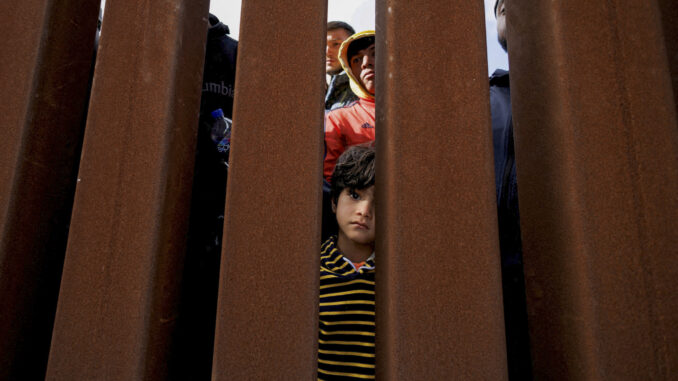
A pandemic-era public health policy known as Title 42, used to turn away asylum seekers at the U.S. southern border, is coming to an end just before midnight tonight, prompting concerns about unprecedented migration flows.
Meanwhile, hundreds of migrants have been waiting outside between border walls in San Ysidro for days, sometimes with nothing more to eat all day than a single granola bar handed out by Border Patrol officers.
Federal, state and local officials have had more than two years to prepare for this moment. But officials running migrant shelters on both sides of the border say they have very little information about how to handle the anticipated increase in asylum seekers trying to cross from Mexico into California and other states.
“Really, it is very much a touch-and-go situation, where we’re responding to needs in our community as they happen,” said Patrick Giuliani, policy analyst with Hope Border Institute, a Texas-based nonprofit that provides humanitarian aid.
- Giuliani: “A lot of this work of reception is falling on nonprofits and church communities locally, without the information on how many numbers of people are we seeing? What are the plans? What type of financial support is there?”
Texas and Arizona have been readying their state’s National Guard troops to go to the border, but California officials have taken less of a hard-line approach.
- Gov. Gavin Newsom, in a statement: “While the federal government is responsible for immigration policy and processing, California has served as a model of partnership for a safe and welcoming border, undertaking humanitarian efforts in border communities to support arriving migrants once they have been released by the federal government.”
The state supports three migrant shelters, two in San Diego and one in Imperial County; two travel staging sites, one in Imperial and one in San Diego; and six temporary sheltering sites in Riverside County, Newsom’s office said. California also has invested $1 billion since 2019 and supported 350,000 migrants since April 2021 with temporary services and onward travel coordination, his office added.
Newsom’s office did not respond to questions about whether there are any additional funds or new plans in place to deal with federal policy changes this week.
Wednesday, the Biden administration published the final version of a new rule imposing what advocates say is a near-total ban on asylum at the U.S. southern border. It’s unclear how it will impact the expected increases in people trying to cross the border.
The Department of Homeland Security said the new policy will disqualify people from asylum in the U.S. if they did not first apply for it in countries they passed through. The Trump administration tried similar regulations but they were struck down by the courts.
San Diego County Supervisor Jim Desmond, a Republican, said he plans to tour the border this morning. “Seeing the recent images of thousands of people making their way through Central America and Mexico is alarming, and I’m concerned the federal government is ill-prepared and has not put the resources in place to adequately protect San Diegans and the asylum-seeking migrants,” he said.



Be the first to comment